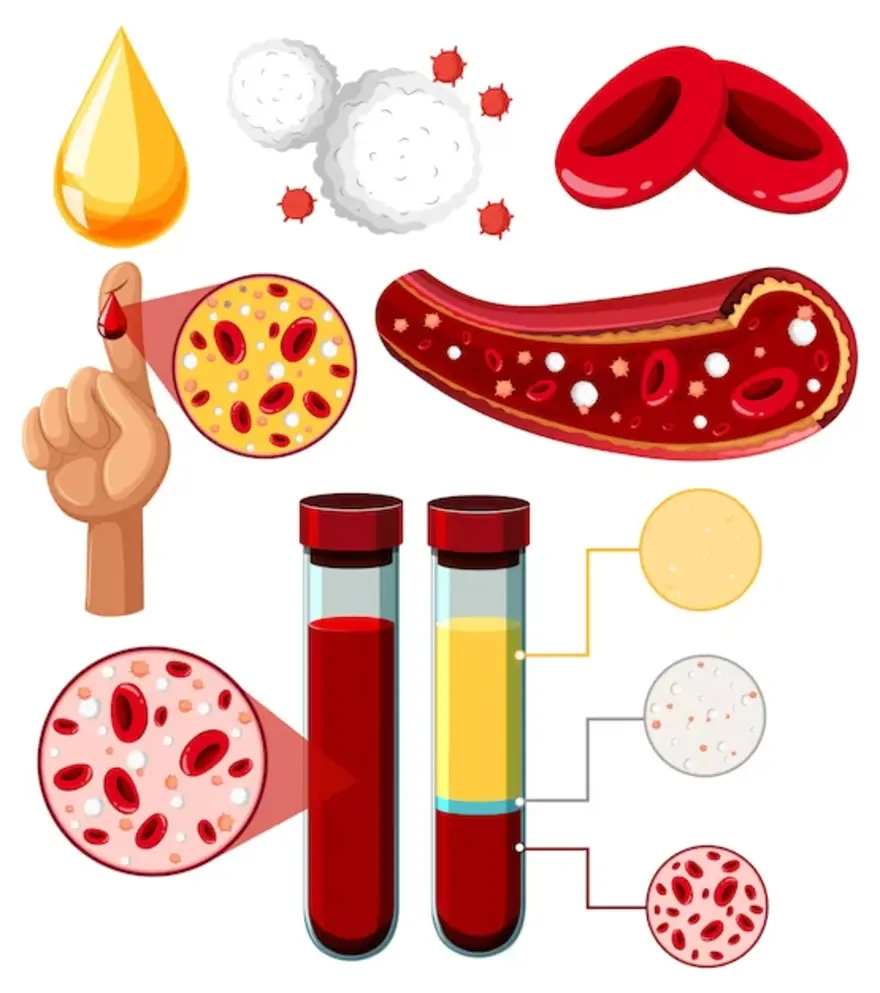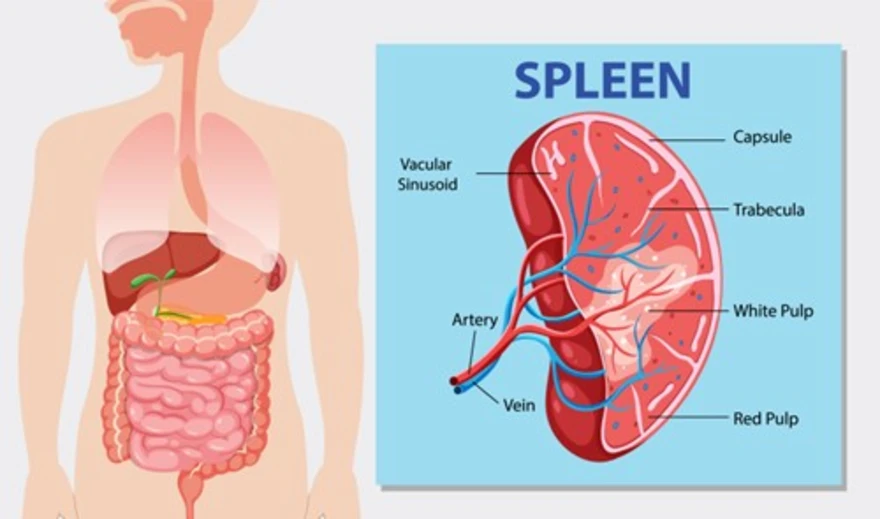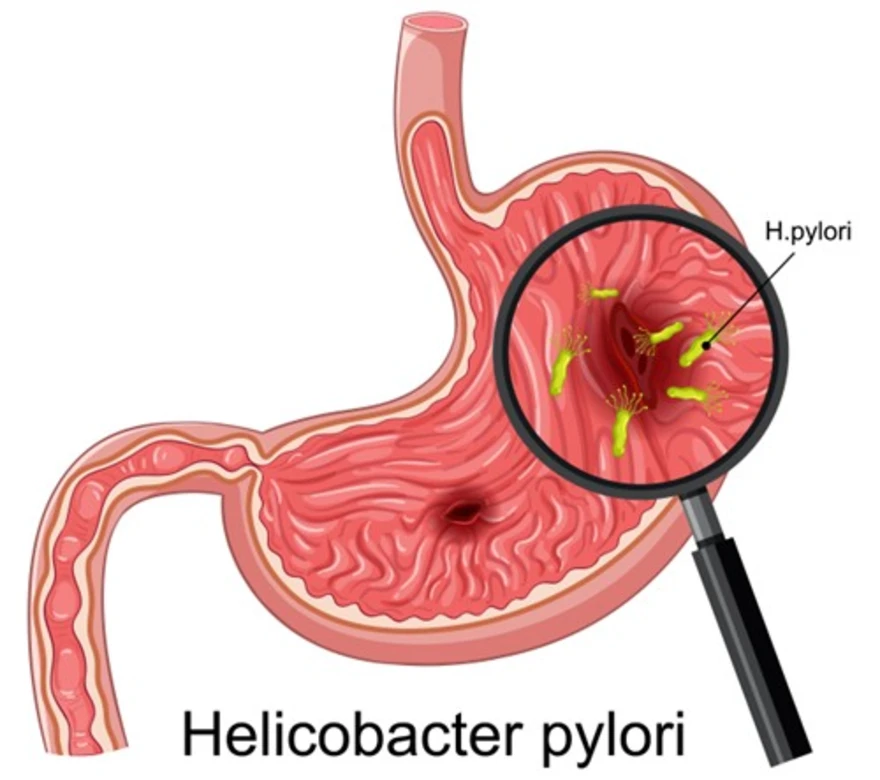Preventive Healthcare
Viral Fever: Symptoms, Causes, Diagnosis, Treatment, and Prevention

Table of Contents
What is Viral Fever?
Viral fever is a common condition caused by a viral infection that leads to an increase in body temperature as part of the body's inflammatory response to fight the infection. While it can affect anyone, it’s often accompanied by symptoms like chills, fatigue, and headache.
Although viral fever symptoms can make you feel unwell, they are usually short-lived and can be managed with proper care. Most of the time, it resolves on its own with time, rest, and hydration.
Ways of Spreading Viral Infections
Viral infections are spread through a variety of ways. Understanding how these viruses spread can help you take the necessary steps to avoid getting sick or passing the infection on to others.
Here are the main ways viral fever spreads:
- Direct Contact: Viral infections often spread when you come into direct contact with an infected person. This could be through touching skin or shaking hands, especially if the other person is sick.
- Airborne Transmission: Many viruses causing viral fever spread through the air when an infected person coughs or sneezes. Tiny droplets can land on surfaces or be inhaled by others nearby, leading to further spread.
- Contaminated Surfaces: If you touch surfaces contaminated with viral particles (e.g., doorknobs, phones, etc.), you may unknowingly transfer the virus to your mouth, nose, or eyes.
- Water and Food Contamination: Some viruses, like ones that cause gastroenteritis, can spread through contaminated food or water, making it vital to ensure that your food and water sources are clean and safe.
- Fecal-Oral Route: Some viral fever viruses can spread through fecal particles, especially if hygiene practices aren’t followed, such as not washing your hands after using the toilet.
- Close Proximity: Living or working closely with someone who has a viral fever can increase your risk of contracting it, as the virus can easily pass between individuals when they are in close contact.
- Vector Borne: Certain viral infections, like dengue and Zika, are spread through the bite of infected mosquitoes, making them vector-borne illnesses.
By following basic hygiene measures like handwashing, using a mask if you're sick, and avoiding close contact with infected individuals, you can help prevent the spread of viral fever.
Viral Fever Types
There are several types of viral fever that can affect you, and each comes with its own set of symptoms and characteristics. Here’s an overview of the most common types of fever:
- Dengue Fever: Caused by the dengue virus, this fever is transmitted by mosquitoes and leads to symptoms like high fever, severe headache, pain behind the eyes, joint and muscle pain, and skin rashes. It is important to stay hydrated and avoid mosquito bites to manage and prevent this fever.
- Chikungunya Fever: This is another mosquito-borne fever caused by the chikungunya virus. Symptoms include high fever, severe joint pain, and rash. The pain can be debilitating, especially in the joints, and may last for weeks or months.
- Influenza (Flu): Caused by the influenza virus, this viral fever usually results in fever, body aches, sore throat, cough, and fatigue. The flu virus is highly contagious and can spread quickly in crowded places.
- COVID-19: The COVID-19 virus, a newer strain of coronavirus, can lead to viral fever symptoms such as fever, cough, shortness of breath, fatigue, and loss of taste or smell. It spreads through respiratory droplets and can be serious, especially for older adults and those with underlying health conditions.
- Typhoid Fever: Caused by the bacteria Salmonella typhi, this type of fever is a bacterial infection, though it can often be confused with viral fevers due to similar symptoms such as high fever, headache, and fatigue.
- Zika Virus: Transmitted by mosquitoes, Zika can cause mild fever, rash, and joint pain. Pregnant women who contract Zika are at risk of giving birth to babies with birth defects.
- Common Cold and Other Viral Infections: Many common viral infections can cause fever as a symptom. These include rhinovirus (common cold), adenovirus, and respiratory syncytial virus (RSV).
Each type of fever may require specific care, and understanding which viral infection you have is important for proper management.
Viral Fever Symptoms
The symptoms of viral fever vary depending on the virus causing it, but there are some common signs to watch for. Early recognition of these symptoms can help you take the right steps in managing your fever and seeking medical help if needed.
- High Fever: One of the first signs you may notice is an elevated body temperature, often above 38°C (100.4°F). This is the body’s natural response to fighting off the infection.
- Chills: You might feel cold and experience shivering, despite your body temperature rising. This is a common symptom of viral fever and typically accompanies the fever itself.
- Headache: Many people with viral fever experience headaches, ranging from mild to severe, which can be quite uncomfortable.
- Fatigue: Feeling unusually tired or weak is another common symptom. This happens because your body is using a lot of energy to fight off the virus.
- Muscle and Joint Pain: Body aches are often reported with viral fever and can cause discomfort and difficulty moving.
- Cough or Sore Throat: Depending on the type of viral infection, you may experience a cough or sore throat along with the fever.
- Rash: Some viral fevers, like dengue and Zika, can lead to a rash on your skin, which might be itchy or red.
- Nausea and Vomiting: In some cases, you may feel nauseous or experience vomiting, particularly with viral infections like the flu or gastroenteritis.
- Loss of Appetite: Many individuals lose their appetite during a viral fever, which is partly due to the body’s stress response.
If you experience these viral fever symptoms, it’s important to rest, stay hydrated, and monitor your condition to ensure it improves. Should symptoms persist or worsen, it’s best to consult a healthcare professional.
Causes of Viral Fever
The causes of viral fever are wide-ranging, as there are many different viruses that can lead to an increase in body temperature. Some of the most common causes of viral fever include:
- Infections from Viruses: The primary cause of viral fever is an infection caused by a virus. Viruses like influenza, dengue, chikungunya, and the common cold are all capable of inducing a fever.
- Infectious Diseases: Certain infectious diseases, including the flu and COVID-19, are some of the most common causes of viral fever. These diseases spread through respiratory droplets and close contact with infected individuals.
- Poor Hygiene: Lack of proper hygiene, such as failing to wash hands regularly or eating contaminated food, can increase your risk of contracting a viral infection that leads to a fever.
- Contaminated Water: Waterborne viral infections, such as rotavirus, can lead to gastrointestinal issues and fever. Drinking unclean or untreated water is a key risk factor.
- Seasonal Outbreaks: In certain seasons, viral infections are more likely to spread due to factors like temperature and humidity, which promote the growth of bacteria and viruses.
- Insect Bites: Some viral fever infections, like dengue or Zika, are transmitted by the bite of an infected mosquito.
By practising proper hygiene, staying hydrated, and being aware of outbreaks in your area, you can reduce the risk of contracting viral infections.
Viral Fever Complications
Though viral fever is typically manageable, it can sometimes lead to complications, particularly if left untreated. While most people recover without issue, it’s important to be aware of the potential risks:
- Dehydration: A common complication of viral fever, especially if you have symptoms like vomiting or diarrhoea, is dehydration. It’s crucial to drink plenty of fluids to avoid this.
- Pneumonia: In some cases, a viral fever, like the flu, can lead to secondary bacterial infections such as pneumonia. This is more common in young children, elderly individuals, and those with weakened immune systems.
- Sepsis: Although rare, a viral infection can lead to sepsis, a life-threatening condition caused by the body’s extreme response to an infection.
- Organ Damage: Certain viral infections, like the dengue virus, can affect organs such as the liver, heart, and kidneys, leading to more severe illness.
- Chronic Fatigue: In some cases, a viral fever can lead to ongoing fatigue and malaise even after the fever has subsided. This is particularly common with infections like the Epstein-Barr virus.
- Neurological Issues: Some viral infections, such as the Zika virus, can cause neurological complications, particularly in newborns if the mother is infected during pregnancy.
While these complications are concerning, most people recover from viral fever with the right treatment and care. If you experience severe symptoms or complications, seek medical attention immediately.
Viral Fever in Different Age Groups
Viral fever can affect people of all ages, but the way it presents and the risks involved can vary based on age.
Here’s a look at how viral fever affects different age groups:
- Children: Children are particularly susceptible to viral fever, as their immune systems are still developing. Common viral fevers in children include the flu, chickenpox, and RSV. In younger children, fever can sometimes cause febrile seizures, which can be alarming but are usually not dangerous.
- Adults: For most adults, viral fever is a temporary condition that resolves with proper care. However, it can lead to fatigue and body aches, particularly with infections like the flu. Adults with underlying conditions such as asthma or diabetes may experience more severe symptoms and should seek medical advice if needed.
- Elderly Individuals: The elderly are more vulnerable to complications from viral fever. Their immune systems may not be as effective at fighting off infections, increasing the risk of severe illness. It’s crucial for older adults to seek medical care if symptoms persist or worsen.
- Pregnant Women: Pregnant women who contract viral infections like Zika or the flu should take extra precautions, as these infections can affect both mother and baby. Consult your healthcare provider if you suspect a viral infection.
By understanding how viral fever impacts different age groups, you can take appropriate action to protect yourself and your loved ones.
Diagnosis & Test of Viral Fever
To diagnose viral fever, healthcare professionals can rely on a combination of clinical evaluation and diagnostic tests.
Here’s how the process typically works:
- Physical Examination: Your doctor will begin by taking a detailed medical history and performing a physical examination. They will ask about your symptoms, duration of fever, and possible exposure to infected individuals.
- Blood Tests: Blood tests are often used to identify the specific virus causing the fever. A complete blood count (CBC) can help determine if your immune system is fighting an infection, while other tests may look for specific viral markers.
- Urine Tests: In some cases, a urine test may be done to check for signs of dehydration or urinary tract infection, which can mimic some viral fever symptoms.
- Throat Swab: If your doctor suspects a respiratory infection like the flu or COVID-19, they may take a throat or nasal swab for testing.
- Imaging Tests: In rare cases, imaging tests like X-rays may be necessary if there is concern about complications such as pneumonia.
By undergoing these diagnostic tests, healthcare professionals can confirm whether you have a viral fever and determine the best course of treatment.
Viral Fever Treatment
When it comes to viral fever treatment, most cases are managed with supportive care to alleviate symptoms. Treatment focuses on making you feel better and ensuring your body is hydrated and rested as it fights off the virus.
Common Treatments
- Rest: Getting plenty of rest is essential for your body to recover and fight off the infection.
- Hydration: Drink fluids regularly to prevent dehydration. Water, herbal teas, and clear broths can help.
- Fever-Reducing Medication: Medications like paracetamol can help reduce fever and ease discomfort. Always follow the dosage instructions carefully.
- Pain Relief: Over-the-counter pain relief like ibuprofen can help with headaches and body aches.
Dietary Recommendations
- Light Meals: Stick to light, easily digestible foods like soups, rice, and plain crackers. Avoid heavy or spicy meals.
- Hydrating Foods: Foods with high water content, like fruits and vegetables, can help keep you hydrated while providing essential vitamins.
- Avoid Dairy Products: Dairy can sometimes increase mucus production, which may worsen symptoms, particularly with respiratory infections.
Vaccines and Medications
- Vaccines: Vaccines for certain viral fever types, such as the flu or dengue, can help prevent infections. Consult with your doctor about getting vaccinated.
- Antiviral Medications: In some cases, doctors may prescribe viral fever medicine to shorten the duration of the illness or reduce complications, depending on the virus.
Preventive Measures to Control Viral Fever
To prevent the spread and contraction of viral fever, there are several precautions you can take:
- Wash Your Hands: Regularly washing your hands with soap and water is one of the most effective ways to prevent viral infections.
- Avoid Close Contact: If someone in your household is sick, try to limit close contact with them to avoid getting infected.
- Stay Up to Date with Vaccines: Ensure you’re vaccinated against viruses that cause viral fever, such as the flu.
- Use Mosquito Repellent: If you live in an area with mosquitoes, use insect repellent and wear protective clothing to prevent bites.
By adopting these preventive measures, you can reduce the risk of viral fever and keep yourself and your loved ones safe.
Conclusion
In conclusion, viral fever is a common condition that can be caused by various viral infections, leading to a range of symptoms such as fever, chills, headache, and fatigue. While it can be alarming, most cases resolve with proper care, including rest, hydration, and fever-reducing medications.
To ensure accurate diagnosis and effective management, regular testing is essential. Metropolis Healthcare offers comprehensive diagnostic services, including blood tests and health check-up packages, to help you monitor and manage your health with confidence. For precise results and reliable care, consider Metropolis Healthcare for all your diagnostic needs.
FAQs
Is viral fever contagious?
Yes, viral fever is contagious and spreads through direct contact, respiratory droplets, or contaminated surfaces.
How to cure viral fever?
Rest, hydration, fever-reducing medications, and a balanced diet can help manage viral fever symptoms effectively.
What is the duration of viral fever in children?
The duration of viral fever in children typically lasts 3–5 days, but it may vary depending on the virus.
Does viral fever spread?
Yes, viral fever can spread easily through coughing, sneezing, and close contact with infected individuals.
Does loss of smell occur in viral fever?
Loss of smell can occur in some viral fevers, particularly those caused by respiratory viruses like COVID-19.
Can viral fever last for 7–10 days?
Yes, some viral fevers can last for 7–10 days, especially if caused by specific viruses like influenza.
What is the viral fever temperature range?
The temperature range for viral fever typically varies between 38°C and 40°C (100.4°F to 104°F).
How long does viral fever last in babies?
In babies, viral fever usually lasts 2–4 days, but it’s essential to monitor their condition closely.
What is the difference between dengue and viral fever?
Dengue causes severe joint pain and rash, whereas viral fever typically presents with general fever, chills, and fatigue.
What blood tests diagnose viral fever?
Common tests for diagnosing viral fever include CBC, CRP, and specific viral panels like the Comprehensive Fever Panel.
Is viral fever in babies different from adults?
Viral fever in babies may present with more severe symptoms like irritability, dehydration, and difficulty feeding compared to adults.
Can viral fever cause loss of appetite?
Yes, viral fever often leads to a loss of appetite, as the body focuses on fighting the infection.


























